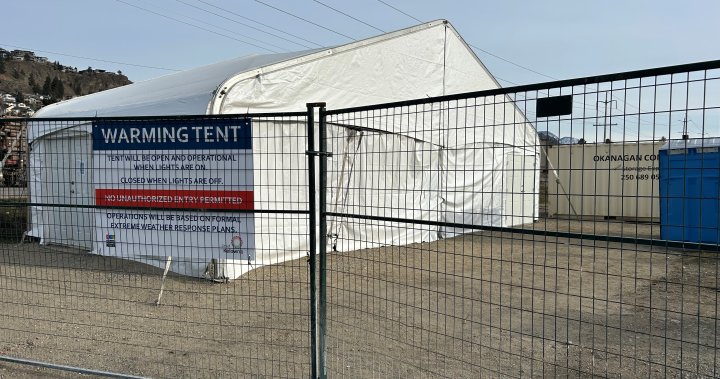The precarious living conditions at Kelowna’s outdoor sheltering site, commonly referred to as “tent city,” have been tragically underscored by a recent tent fire. This incident, occurring amidst the biting cold of winter, highlights the inherent dangers faced by those living unsheltered and raises concerns about the adequacy of current support systems. While the specific cause of the fire remains undetermined, the Kelowna Fire Department has confirmed that fires are a recurrent issue along this stretch of the Okanagan Rail Trail, often ignited by residents attempting to ward off the frigid temperatures. Resourceful residents, like Aaron, who calls the tent city home, have described resorting to precarious methods such as propane heaters and candles for warmth, highlighting the desperation and inherent risks associated with these makeshift solutions.
In a promising development, however, a new addition has emerged amongst the familiar landscape of tents along the Okanagan Rail Trail: a significantly larger warming tent, erected at the beginning of December. This initiative represents a collaborative effort between BC Housing, the City of Kelowna, and the Gospel Mission, signaling a concerted attempt to enhance safety and provide refuge during the harsh winter months. The tent is designed to offer a crucial layer of protection against the elements and represents a vital component of the city’s cold weather response strategy. Yet, despite its presence and the undeniable need, the warming tent remains unused, its potential benefits unrealized for those braving the elements.
The reason for this seeming contradiction lies in the activation criteria for the warming tent. City officials have established a temperature threshold of -10°C for a sustained period before deploying the tent’s resources. This policy, according to Nick Bonnett, bylaw services manager for the City of Kelowna, is rooted in the principle of emergency intervention. The city views the warming tent as a measure of last resort, to be activated only under the most extreme weather conditions. While the intention may be to reserve resources for critical situations, the current policy leaves vulnerable individuals exposed to hazardous conditions in the interim.
This policy raises crucial questions about the balance between resource management and the immediate needs of the vulnerable population. While temperatures haven’t consistently dipped to -10°C, the reality of living unsheltered, even at moderately cold temperatures, can be incredibly challenging and dangerous. The reliance on open flames for warmth underscores the risks residents are taking in the absence of a safe, accessible warming space. The contrast between the available resource and its inaccessibility creates a poignant illustration of the gap between policy and the lived experiences of those struggling with homelessness.
The potential benefits of the warming tent extend beyond mere physical warmth. Asna Memon, outreach services manager for the Gospel Mission, emphasizes the significant positive impact the tent’s availability could have on the mental well-being of the residents. The act of providing a warm, safe space offers more than just protection from the cold; it represents a tangible demonstration of community support, combatting feelings of isolation and despair that often accompany homelessness. It is a message of care and concern, a reminder that someone is looking out for them during their most vulnerable moments.
The current situation underscores a critical debate on the definition of “extreme weather” and the timing of intervention. For those living on the streets, every degree below freezing presents a significant challenge, increasing the risk of hypothermia and other cold-related illnesses. The delay in activating the warming tent forces individuals to rely on precarious and potentially dangerous methods to stay warm, raising the risk of fires and other accidents. The frustration felt by residents like Aaron, who see a valuable resource sitting unused while they struggle, highlights the disconnect between policy and the lived realities of homelessness. The warming tent, intended as a lifeline during the coldest months, becomes a symbol of unrealized potential, a testament to the challenges in navigating bureaucratic procedures and resource allocation in the face of urgent human need.
The pilot nature of the warming tent project provides an opportunity for crucial evaluation and adjustment. The experiences of this winter season, including the near-miss of the recent fire, should inform future policies and protocols. The voices of those living at the tent city, those most directly impacted by these decisions, must be central to this evaluation process. A reevaluation of the activation threshold, potentially incorporating more nuanced factors beyond a fixed temperature, could ensure that the warming tent serves its intended purpose: providing a safe and accessible refuge during the challenging winter months, protecting vulnerable individuals and preventing unnecessary hardship. Ultimately, the goal must be to bridge the gap between policy and practice, ensuring that resources are deployed effectively to meet the immediate needs of those most vulnerable, mitigating the risks of living unsheltered and offering a tangible path towards safety and stability.

